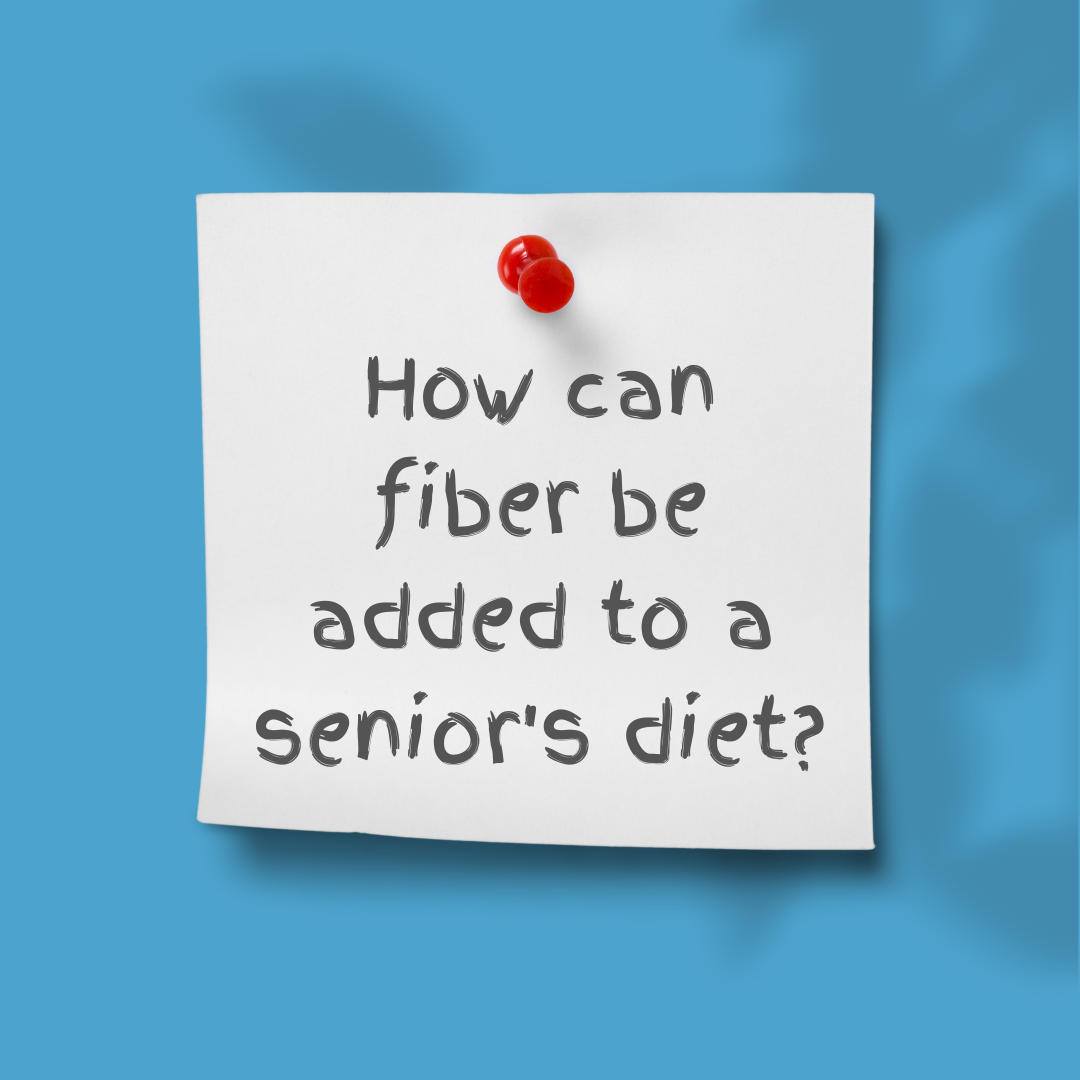Adding fiber to a senior’s diet is essential for maintaining their overall health and well-being. Fiber offers a wide range of health benefits, especially for older adults. It aids in digestion, helps regulate blood sugar levels, lowers cholesterol, and prevents constipation. Here are some strategies for incorporating more fiber into a senior’s diet:
- Whole Grains: Replace refined grains with whole grains. Seniors can switch from white bread, rice, and pasta to whole-grain versions. Oatmeal, whole-grain cereals, and whole wheat crackers are also good choices.
- Fruits and Vegetables: Encourage seniors to consume a variety of fruits and vegetables. Fresh, frozen, and canned options are all suitable. These foods are not only rich in fiber but also provide essential vitamins and minerals. High-fiber options include apples, pears, broccoli, carrots, and leafy greens.
- Beans and Legumes: Incorporate beans and legumes like lentils, chickpeas, and black beans into their meals. They can be used in soups, salads, or as a side dish. These foods are excellent sources of fiber and protein.
- Nuts and Seeds: Add nuts and seeds to their diet. Almonds, chia seeds, and flaxseeds are particularly high in fiber and can be sprinkled on yogurt or added to smoothies.
- Fiber Supplements: In some cases, seniors may have difficulty meeting their fiber needs through diet alone. Fiber supplements like psyllium husk or inulin powder can be an option, but it’s essential to consult a healthcare professional before using them.
- Stay Hydrated: It’s important to increase fluid intake when adding more fiber to the diet. Adequate hydration helps prevent constipation and allows fiber to work effectively in the digestive system.
- Fiber-Rich Snacks: Stock the pantry with fiber-rich snacks. Seniors can enjoy popcorn (without excessive butter or salt), whole-grain crackers, or vegetable sticks with hummus as healthy snack options.
- Gradual Changes: Make dietary changes gradually to allow their digestive system to adjust. Sudden increases in fiber intake can lead to digestive discomfort, so it’s best to introduce fiber-rich foods slowly.
- Balanced Meals: Encourage balanced meals that include fiber-rich components. For example, a whole-grain source, lean protein, and plenty of vegetables can be the foundation of a healthy plate.
- Customized Diet Plans: Consider consulting a registered dietitian or nutritionist to create a customized diet plan tailored to a senior’s specific dietary needs, taking into account any health conditions or dietary restrictions.
- Regular Monitoring: Monitor their progress and make adjustments as needed. Some seniors may experience bloating or gas when increasing fiber intake. Being aware of these issues and adjusting the diet accordingly can help.
Incorporating fiber into a senior’s diet can significantly improve their quality of life, ensuring better digestion and reducing the risk of chronic diseases. However, it’s crucial to consult with a healthcare professional or dietitian to create a personalized plan that addresses their specific dietary requirements and any existing health conditions. With the right guidance and support, seniors can enjoy the numerous benefits of a fiber-rich diet.




